Companies don’t become customer centric without working for it. Learn what CX training is, and how to get it right. Featuring insights from our Instructional Design team at NPSx.
Are customers willing to recommend you?
The answer is a powerful testament to the products, services and customer experiences (CX) you deliver. So powerful, that companies reliably use Net Promoter Scores (NPS) to evaluate other performance metrics, such as retention and lifetime customer value. The higher your NPS, the more likely you are to keep customers and grow organically.
NPS scores are also actionable. If an issue is raised by customers, it can be identified and the necessary action(s) taken. In addition, customer feedback can—and should—inform training. NPS can indicate focus areas for CX training and upskilling.
Why is CX training important?
Exceptional CX doesn’t happen naturally. It must be taught and routinely exercised for companies to earn and keep customer love. Companies also need supportive cultures and policies to empower employees to act in the best interest of CX.
And that’s the point: The purpose of CX training is to embed customer-centric behaviors into daily interactions and behind-the-scenes processes. Through training, companies set the standards for behavior and decision-making. Certified customer experience professional training ensures everyone is working toward a consistent level of CX.
To do that, employees need to know what’s expected of them. They also need knowledge, skills and tools to create positive interactions with customers. Certified customer experience professional training establishes best practices and strategies to put customers first and create events that make customers more likely to return and recommend your business to family and friends.
When employees have a shared understanding of CX, they can consistently provide remarkable experiences—and stand out from the competition. That’s where CX training begins.
How do you develop a CX training program?
CX training should improve the end-to-end customer journey, enhance customers satisfaction and drive loyalty and retention. To start an effective CX training program:
Endorse it. Start mobilizing C-level sponsors to role model customer-centric behaviors and drive adoption. Ideally, senior managers and leaders should complete the training themselves, so customer centricity becomes embedded into higher-level strategies. Executives set the tone and can reinforce new behaviors and encourage participation.
Establish learning objectives and measurements. Begin by linking foundational CX skills to strategic priorities. What do employees need to know or do differently to bring a brand promise to life? Or deliver a new strategy?
Likewise, determine how you plan to track and measure training. What business outcomes or behavior changes do you expect to see after an employee completes training? How will you evaluate learners’ understanding and application of the concepts?
Among other metrics, you can also track compliance/completion, learner experience and engagement. Like sponsorship, measurements and assessments signal that CX training is important.
Focus on routines and processes. Effective training needs clear and direct on-the-job applications, so each lesson should be actionable. It should include practical skills that can be applied right away, even as you build more sophisticated capabilities.
Link everyday behaviors, processes, and routines to the bigger-picture strategy. Every employee should understand how CX—and their individual actions—support the company’s overall mission and strategy.
Make it interactive. Add gamification or rewards systems to make training more engaging for participants. Allow employees to earn points or badges or keep a leader board to make the experience more enjoyable.
Incentivize participation. Reward the behaviors you want to see. Recognize employees who complete the program through ceremonies, rewards, newsletters, or other public recognition. Share training success stories or incorporate employees in the CX curriculum as exemplars.
If you invest in employees and meet their learning needs, they will invest in the work. Training is a direct investment that can positively impact customers and CX.
Know your audience. Tailor the training approach and communication based on roles, progress, and outcomes. Some employees may need prerequisite knowledge on CX or company tools, while others will come to class ready for a deep dive. Meet employees where they are, so the training is relevant and actionable in their daily jobs.
Establish a knowledge hub. CX training can unify teams and the company overall. Create a place for learners to revisit key elements, especially as they receive new CX feedback and as the company grows and evolves. A shared knowledge base supports more consistent experiences for customers. Over time, it builds a common vocabulary and mindset, and CX becomes part of the culture.
Reinforce learning materials. Find ways to continue the learning process, beyond the classroom. Team leads and managers can review CX training content during huddles, using real-life examples to coach employees. Teams can also discuss challenging situations (“teachable moments”) and brainstorm new, creative solutions. Their experiences become new case studies.
Repeat. CX training is not a one-and-done event. The content should change constantly to address customer feedback and other market developments. Regularly review learner feedback and update trainings to stay relevant.
Learn how to lead on CX
CX training provides your employees with sturdy guidelines to solve customer problems, effectively communicate with customers, and escalate issues they can’t solve alone.
CX training also improves back-end functions. With more insight into CX (and a customer-centric mindset), operations teams can enhance CX across the end-to-end customer journey.
If you’re not sure where or how to start, explore training programs that come from industry leaders with well-established background in customer experience capabilities. When you’re warmed up and ready to train, contact NPSx and enhance your employee training program.
Related content:
- How to Win in Customer Experience
- CX Goes Hand-in-Hand with Employee Engagement
- Building a customer-centric organization? Embrace 4 key leadership behaviors

